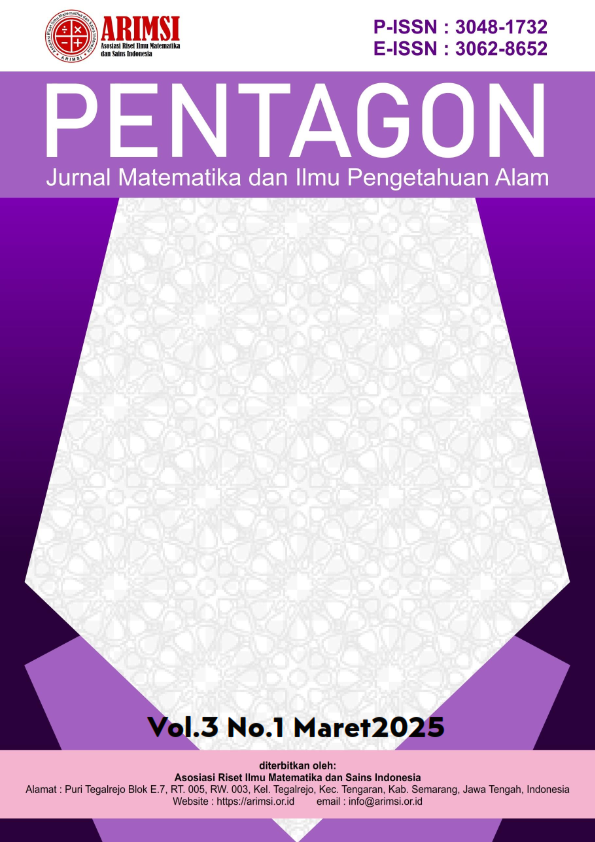Cara Berpikir Visual Siswa SMA dalam Memahami Masalah Dimensi Tiga
DOI:
https://doi.org/10.62383/pentagon.v3i1.399Keywords:
visual thinking, understanding problems, three dimensionsAbstract
This study aims to describe the visual thinking of high school students in understanding three-dimensional problems. This research is a descriptive research with a qualitative approach. Two students with medium and high mathematical skills of the female gender were selected as research subjects. Data was collected by giving three-dimensional problem-solving tasks according to Polya's steps and interviews. Students' visual thinking is described based on seeing, recognizing, imagining, and showing. The results of the study show that at the comprehension stage, students with medium and high mathematical skills do looking and seeing, recognizing and imagining at the planning stage, and showing the steps to implement the problem-solving plan appropriately but in a different way, students with medium ability use more concise steps and vice versa for high-ability students; At the re-examination stage, the two subjects showed (showing) the conclusion of the solution solution, but did not show (showing) re-checking.
Downloads
References
Acravi, A. (2003). The role of visual representations in the learning of mathematics. Educational Studies in Mathematics, 52(3), 215-241
Bolton, S. (2011, April). Decoding visual thinking. In Naver Workshop Visualizing Creative Strategies (Vol. 18).
Dwiwarna & Rahadian, RB. 2018. The Most Considered Type of Student Characteristics by Primary School Teacher. International Journal on Integrating Technology in Education (IJITE). Vol.7, No.3.
Hoosain, E. (2004). What Are Mathematical Problems?. Humanistic Mathematics Network Journal. Vol 1 (12), 1-12.
Schoenfeld, A. H. (2013). Reflections on problem solving theory and practice. The Mathematics Enthusiast, 10(1), 9-34.
Slavin, R. (2006). Educational Psychology: Theory And Practice (8th Edition). Boston: Pearson Education, Inc.
Slavin, R.E. 2018. Psychology of Learning : Theory and Practice. New York : Pearson.
Stokes, S. (2002). Visual literacy in teaching and learning: A literature perspective. Electronic Journal for the integration of Technology in Education, 1(1), 10-19.
Tamrin, H., Surya, E., Mulyono. (2021). Analysis if Students’ Visual Mathematical Ability Improvement using Model Learning Contextual Teaching and Learning. Educations and Humanity Research, 591.
Witkin H., Moore. C.A., Goodenough. D. R., Cox. P. W. 1977. Field Dependentt and Field Independentt Cognitif Syle and Their Education. Review of Education Research Winter, Vol. 47, No.1, Page 1 – 64.
Witkin. H. A., Oltman. P. K., Rasikin. E., & Karp. S. 1971. A Manual For The Group Embeded Figure Test, Palo Alto, CA: Consulting Psycology Press.
Downloads
Published
How to Cite
Issue
Section
License
Copyright (c) 2025 Pentagon : Jurnal Matematika dan Ilmu Pengetahuan Alam

This work is licensed under a Creative Commons Attribution-ShareAlike 4.0 International License.





